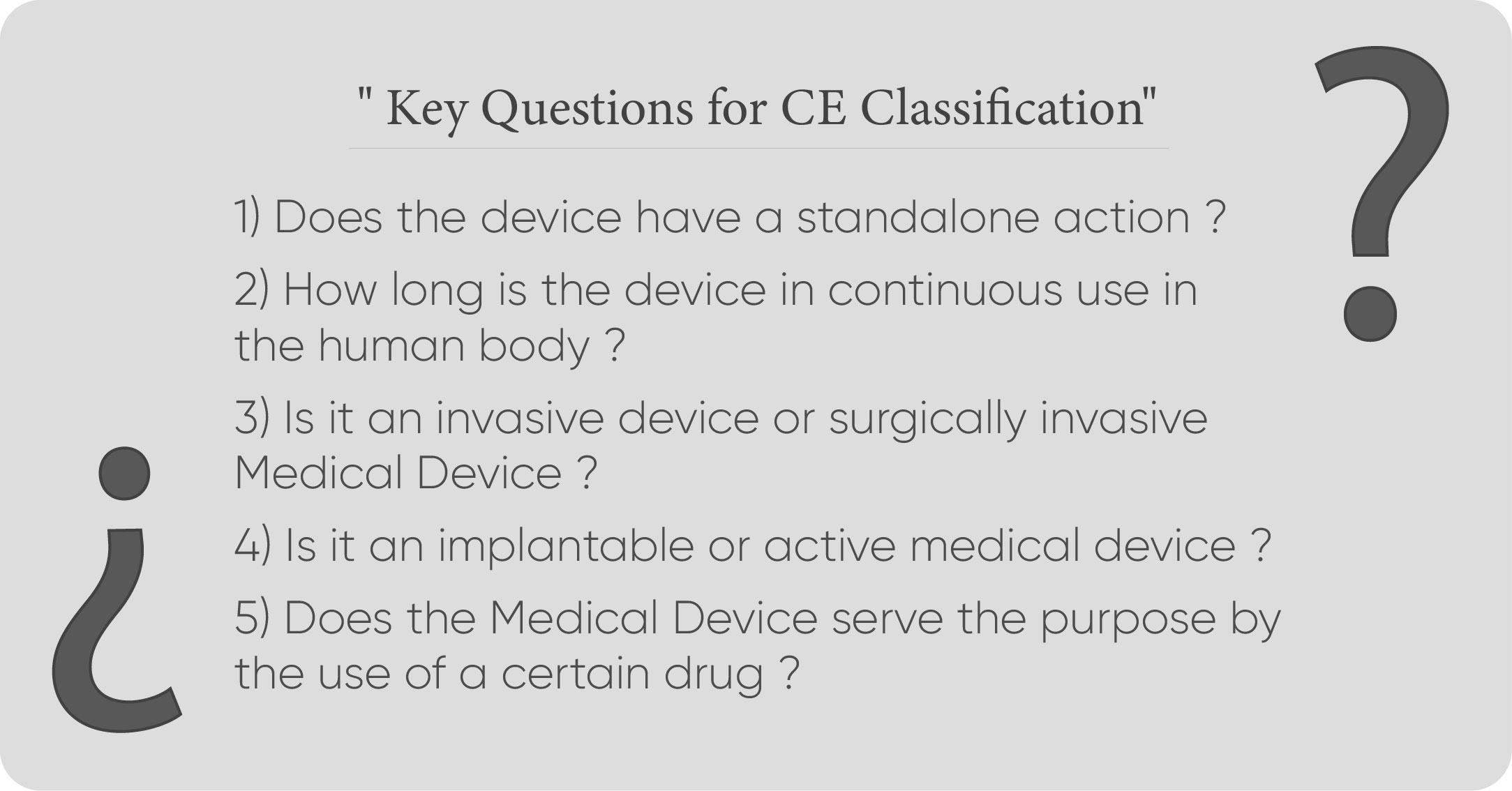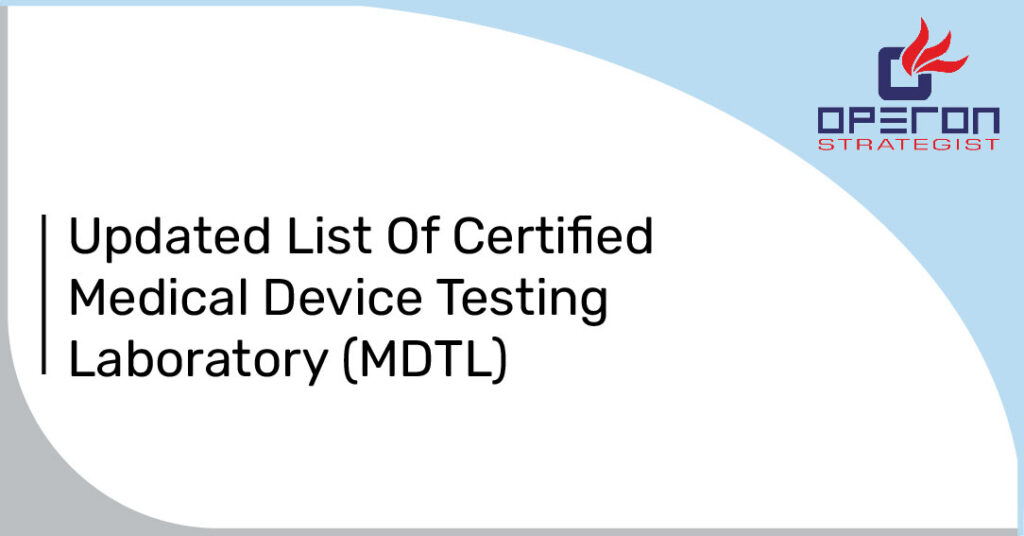Add Your Heading Text Here
The requirements for MDR classification for medical devices are nearly identical to those in the current Medical Devices Directive (MDD). The EU MDR is shaking up the medical device business, and the order regulations have not been left spotless. The MDR decides on the device’s congruity assessment course. While the order is primarily concerned with the maker, if the device falls into Classes IIa, IIb, or III, it includes recommendations for the Notified body.
Before medical device makers may legally CE stamp their products in Europe, they must agree to the EU Commission’s fitting medical device order or guidelines. Before CE marking your products, you must first determine the correct medical device classification. CE marking is a conformity assessment of a product that confirms that it is safe and effective by the standards. As a CE mark medical device consultant, we understand how important it is for your product to be CE-marked in the EU market. A classification affects the administrative requirements for your devices, as well as the endorsement course and its accompanying expenses.
Looking For a Medical Device Regulatory Consultant?
Let’s have a word about your next project
The number of rules in the MDR classes has increased from 18 to 22, and additional adjustments have been made to existing standards, resulting in numerous new classifications. One of the most significant changes to the EU MDR that medical device manufacturers will notice as they work to comply with the new guidelines is a modification in the conditions for device classes. Manufacturers’ requirements change when the classification of medical equipment changes. The MDR will apply to specific products not directed by the MDD, such as non-corrective contact lenses.2 The MDR will also seldom handle devices connecting nonmaterials and devices made from non-feasible human tissue, which are now exempt from the MDD.
With new rules come classification adjustments that affect individual devices. All dynamic implanted devices and accessories will be classified as Class III. Any substance-based devices intended to be used through a body orifice or applied to the skin may not be class I, hence any substance-based devices currently categorized as class I will be reclassified under the new law. Any producer with a gadget that will be up-classified under the MDR must agree to the tighter requirements and will most likely need to draw in their body more. The MDR designation indicates that the goods are specifically designed for the cleaning, disinfection, or sterilization of medical devices.
EU MDR classifications For Medical Devices
One of the first concerns for medical device makers looking to commercialize their products in Europe is determining which classes are appropriate for their devices.
The MDR categorization of the devices will influence how and when you communicate with your Notified Body. As the market transitions from the Medical Devices Directives (MDD) and Active Implantable Medical Devices to the Medical Devices Regulation, device manufacturers must be aware of the changes in device classification criteria. For example, devices that used to be regulated by the Active Implantable Medical Device Directives (MDD) are now under the Medical Device Regulation (MDR).
Medical Device Classification As Per MDR
As per MDR Article, 51 Medical Devices are divided into classes I, IIa, IIb, and class III, taking into account the intended purpose of the devices and their inherent risks. Medical Device classifications are mainly based on the following factors:
The Medical Devices Classification in the European Union’s new MDR is outlined in ANNEX VIII, Chapter I, and the classification Rule is mentioned in Chapter III. This chapter includes definitions of the terminology used in the medical devices guidance document for the classification of Medical Devices.
The Medical Device is classified into:
- Class I
- Class I Sterile
- Class I Measuring
- Class I Reusable
- Class IIa
- Class IIb
- Class III
Add Your Heading Text Here
EU MDR Medical Device Classification Rules
The Medical Device Classification EU rules, which are based on the vulnerability of the human body, should take into account the potential risks associated with the technical design and manufacture of the devices.
You’ll find all those rules on the Medical Device Regulation MDR 2017/745 Annex VIII
- Rule 1– Non-invasive devices
- Rule 2 – Non-invasive devices intended for channeling or storing (Which includes cells)
- Rule 3 – Non-invasive devices that modify the biological or chemical composition of blood, body liquids, other liquids, and cells
- Rule 4 – Non-invasive devices in contact with injured skin or mucous membrane
- Rule 5 – Devices invasive in body orifices
- Rule 6 – Surgically invasive devices for transient use
- Rule 7 – Surgically invasive devices for short-term use
- Rule 8 – Surgically invasive devices for long-term use and implantable (including any device administering medicinal products, surgical mesh, or spinal disc)
- Rule 9 – Active therapeutic devices intended to exchange or administer energy
- Rule 10 – Active devices for diagnosis & monitoring, emit ionizing radiation
- Rule 11 – Software intended to provide information that is used to make decisions with diagnosis or therapeutic purposes (from class I to class III)
- Rule 12 – Active devices intended to administer and/or remove medicinal products, body-liquids or other substances
- Rule 13 – All other active devices
- Rule 14 – Devices incorporating a medicinal substance including human blood or plasma
- Rule 15 – Contraception or prevention of the transmission of sexually transmitted diseases
- Rule 16 – Specific disinfecting, cleaning, and rinsing devices
- Rule 17 – Devices specifically intended for recording of diagnostic images generated by X-ray radiation
- Rule 18 – Devices utilizing non-viable tissues or cells of human origin or tissues of animal or derivatives.
Four new rules:
- Rule 19 – Devices incorporating or consisting of nonmaterial
- Rule 20 – Invasive devices concerning body orifices to administer medicinal products by inhalation
- Rule 21 – Substances or of combinations of substances that are intended to be introduced into the human body via a body orifice or applied to the skin and that are absorbed
- Rule 22 – Active therapeutic devices with an integrated or incorporated diagnostic function that significantly determines patient management.
Adjustments to the medical device classification system are less challenging than those for IVDs, but makers need nevertheless make considerable improvements. Many of these progressions are the result of previous instructions that did not take into account the degree of obtrusiveness and probable toxicity of specific devices. The MDR classification of devices is divided into four categories: class I, class IIa, class IIb, and class III. They are classified based on 23 principles that consider their capability, risk to patients, and the manufacturer’s intended application. There is a special set of classification guidelines for four distinct types of medical devices: non-obtrusive, intrusive, dynamic, and unusual principles for innovative devices that include various substances. Medical device manufacturers should understand that it is critical to accurately classify these devices from the outset since it dictates production requirements, clinical assessment, and congruity evaluation. To be vigilant, manufacturers should survey all current and prospective products to ensure compliance with the new classification system.
Need help with medical device classification and regulatory submissions? We provide expert guidance on medical device classification and regulatory compliance, including support for CDSCO and FDA 510(k) submissions. Reach out to learn more about how we can assist with your regulatory requirements
- adminhttps://operonstrategist.com/author/admin-2/
- adminhttps://operonstrategist.com/author/admin-2/
- adminhttps://operonstrategist.com/author/admin-2/
- adminhttps://operonstrategist.com/author/admin-2/





